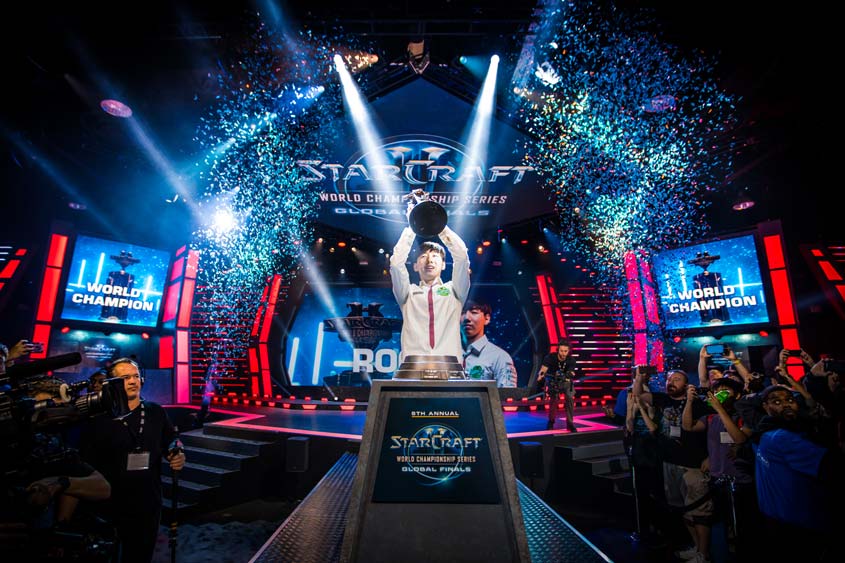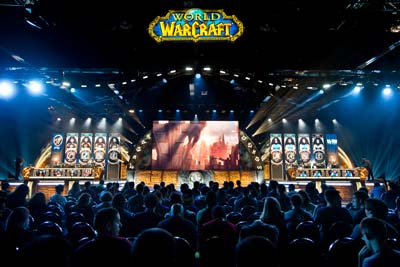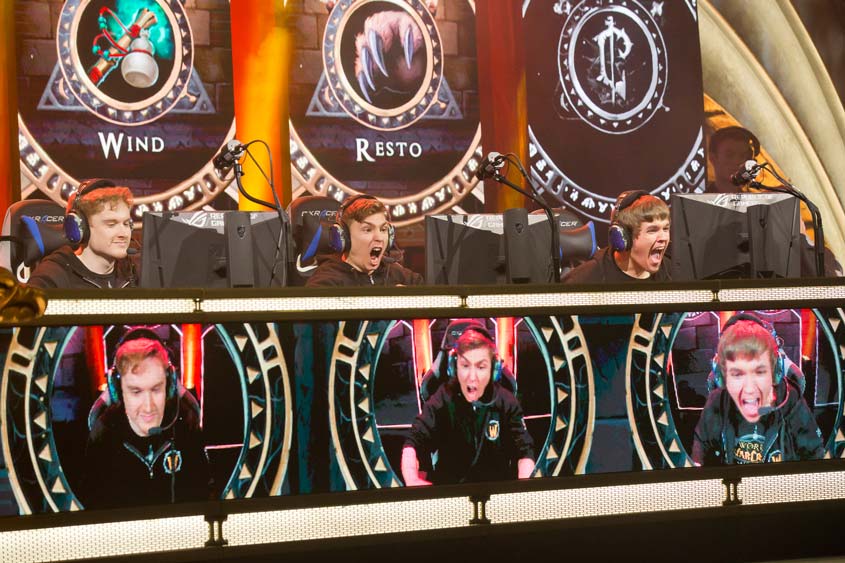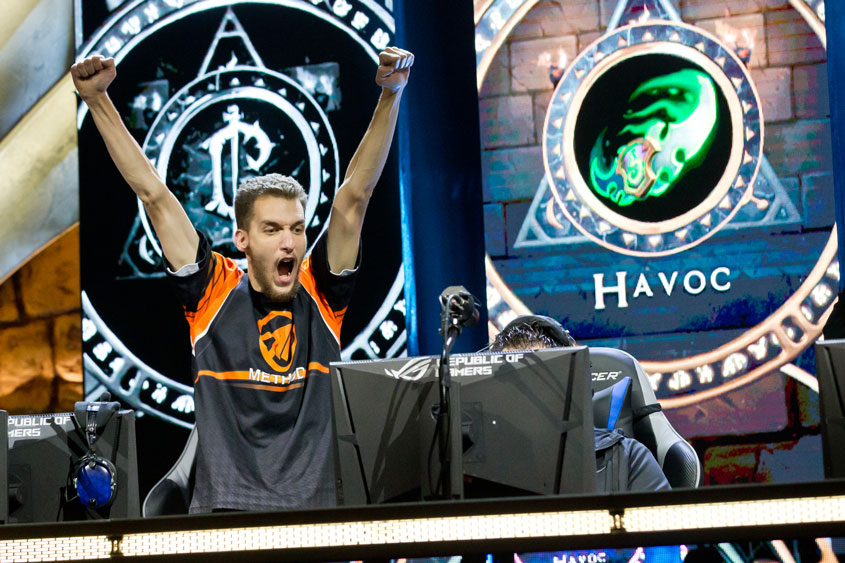
eSport: everything to play for
By Stephen Townley and Annie Townley of Active Rights Management Limited, London, United Kingdom
The International Olympic Committee (IOC) has declared that eSport, or competitive video gaming, could be considered a sporting activity. That is a momentous decision. eSport is an important way of reaching young people and a vitally important market for media businesses, game producers and sports themselves. There is everything to play for.
But the issues at stake are not clear cut. Is eSport really sport? What are the potential benefits and challenges for the sports industry of recognizing eSport? And – crucially – what are the implications in terms of intellectual property (IP)?

Is eSport sport?
At a summit on October 28, 2017 in Lausanne, Switzerland, the IOC decided that “Competitive ‘eSports’ could be considered as a sporting activity, and the players involved prepare and train with an intensity which may be comparable to athletes in traditional sports.”
It also said that any eSport would need to fit with the rules and regulations of the Olympic movement in order to gain IOC recognition, and agreed to carry on discussions with the gaming industry and players along with the Global Association of International Sports Federations (GAISF).
The key word in the IOC decision is “competitive” – the analogy is perhaps the difference between a morning run around the park and a race. The IOC has recognized that a competition element – “the winning or losing” of an event run according to a predefined set of rules – is essential. Competitive eSports must tick that box. Indeed, as the computer code behind an eSport game avoids the subjective and possibly fallible input of a referee or judge, one could argue that it is a competition but a fairer one.
For some people, the IOC’s focus on competition and athletes’ training may not be enough. Some would argue that the definition of sport must include a sports performance, the outcome of the interaction between the mind and body of the athlete – as seen, for example, in a golfer swinging a club and striking the ball. The role of the body and physical activity in eSport is different. The body is not involved beyond interaction with the input device and the game software, for example in hand-eye coordination. However, objections to eSport on this ground are confounded by the widespread acceptance over recent years of mind sports, such as chess, and the increasingly important technology-aided aspects of, say, motor sports.
Why sport can’t ignore eSport
So why are the IOC and the sports industry interested in eSport? In a word: potential. eSport offers great opportunities to attract and retain a global following, especially among younger people.
Traditional sport has a problem: media fragmentation – the increasing choice and consumption of content across different media – is changing the way sports fans wish to receive and engage with sport content. Any content that may build a deeper level of fan engagement, particularly with a younger audience, is desired by sport. Market data analysts BI Intelligence have suggested that the proportion of millennials in the United States who watch eSport is higher than those who watch any of the major US leagues. Major sports have their own official eSport titles but, tellingly, neither of the current top-selling eSport titles linked to traditional sports, namely FIFA 18 and NBA2K, feature among what the games industry classifies as its 10 top-selling titles.

eSport revenues will reach USD 696 million by 2017 and USD 1.5 billion
by 2020 (photo: © Blizzard Entertainment, Inc. All Rights Reserved).
Admittedly, the current eSport community is tiny compared with the sports community. The IOC report on Rio 2016 affirmed media fragmentation, with 7.2 billion views of official content on social media platforms. The same report indicated that half the world’s population had watched at least some of the Rio 2016 Summer Olympic Games on television. But what of the future? Research by data analysts Statista has estimated a global eSport audience of 385 million. And market intelligence provider Newzoo’s research has suggested that eSport revenues will reach USD 696 million by 2017 and USD 1.5 billion by 2020.
Countries hungry for gold medals and with a digitally strong youth population are turning to eSport for chances of international glory. Last year, Singapore launched an eSport Academy to further its efforts, and its government-funded sport council includes eSport in its elite athlete program.
Intel, the IOC’s partner in the TOP worldwide sponsorship program, announced two eSport events ahead of the PyeongChang 2018 Winter Olympic Games. eSport will also be exhibited at the 2018 Asian Games prior to its formal inclusion in the program for the 2022 Asian Games. This international exposure will increase government support for elite eSport athletes.
The commercial opportunities are potentially enticing. In 2014, Amazon purchased the leading eSport media platform Twitch, demonstrating that major players see the opportunity that “sport” will grow their business. It is therefore hardly surprising that the sports industry wants a slice of the action.
But if eSport represents an opportunity for sport, it also poses challenges. To understand those challenges, one needs to grasp the critical importance of intellectual property for modern sport.
Sport and IP – a complex relationship
Sport and IP have a checkered history. We would go as far as to say that no other industry has struggled more to try to gain the benefits of IP protection. The meteoric growth in the value of the sports industry over the last 30 years has been driven by the importance of sports material as content that could be used by media businesses to acquire customers, which in turn boosted growth in the value of association (sponsorship, advertising and merchandising). Sport wanted to benefit from any available IP protection and at the same time society wanted to preserve access to sport for all as a basic human right.
Protecting sport through IP law is not straightforward. A sports performance is not recognized as a copyright work in the same way as a musical or dramatic performance. The portrayal of the sports performance through a picture or media coverage may, however, attract IP in different jurisdictions. Exclusivity in content licensing is achieved through contracts with athletes, the media, commercial partners, press and audiences. IP created by others is assigned in return for access.
Active Rights Management (ARM) was involved with the IOC in amending its charter in 2000 to extend the IOC’s assertion of ownership of representations of a sports performance to include digital representations. ARM also worked with the sports industry to open a debate within the European Union on whether something similar to a sports performance right should be recognized. The EU Court of Justice commented on this issue in the Murphy case (joined cases C-403/08 and C-429/08 Football Association Premier League v QC Leisure and Karen Murphy v Media Protection Services Limited): “sports events such as football matches cannot be considered intellectual creations or works and so cannot be protected by copyright.” It was noted that sports events have a unique and original character that can transform them into subject matter worthy of protection. The EU determined that whether to grant such protection should be left to Member States in their domestic legal framework. Some countries have done so. Most have not.
As the pie of revenue from sport has expanded, and as media have fragmented, the tensions over IP rights have increased. Athletes, teams, officials, event promoters and governing bodies all fight to secure what they see as their fair return for their efforts, skills and inventions.
These challenges have entered a new dimension with the emergence of eSport, with console manufactures, game developers, publishers and players looking to be accepted as part of the family of sport while controlling access to their own communities.
eSport, sport and IP
eSport upsets the delicate relationship between sport and IP in two ways.
First, there is a significant difference between the legal protection available to sport and eSport. The law may recognize IP in a virtual eSport game but not in the real sporting event, because whereas a sport performance does not amount to a copyright work, the recognized creative work in developing and publishing eSport will qualify for such protection.
If there is no generic right in sports performances, what is to stop an eSport event or league replicating an existing event? Copyright, trademarks, goodwill and “get up” and in some cases image rights may be potential legal mechanisms for a sports organization, but ambush marketing (when businesses that have no official connection with an event seek to exploit it for publicity) has already shown that there may be ways around traditional IP protection in the sports industry.
Second, eSport may entail significant reputational risks for sport. The sport industry is often conservative. Sport can be entertaining and at one level it is entertainment, but it is also so much more. Its value system is important because athletes often act as role models by inspiring fair play in life. Sports governance seeks to protect and achieve this purpose.

The sport industry operates within a highly regulated framework. Not only are there carefully guarded rules of the game, but there is much internal and external regulation of the industry. Sport uses the granting of “official” status to events and partners, including eSport game developers, to control how their sport is represented. The “rules” of a sport are its core asset, developed carefully over many years.
In contrast, the evolution of eSport has rested on a youth market and culture. This often challenges rather than aligns with the established order. Part of the attraction of eSport is that it is pure entertainment. It is not trying to become a model for good citizenship. And since eSport may protect the characters and game format through copyright, regulating the rules of the game may be less important or even irrelevant.

A culture clash?
This intrinsic value system of sport, and the challenge that eSport poses to it, have been recognized by IOC President Thomas Bach. “We want to promote non-discrimination, non-violence, and peace among people. This doesn’t match with video games which are about violence, explosions and killing,” he told the South China Morning Post.
Is the Olympic Charter strong enough to distinguish competitive “war” games from others of a more wholesome nature? Is a game that involves firing arrows at an ancient army eSport because it involves archery? The Olympic Games include boxing, which clearly involves real physical pain. Is a virtual shooting game any less defensible?
Ethical and disciplinary matters have already arisen in eSport. Verbal abuse appears commonplace. For example, the player Christian “IWillDominate” Rivera was banned from competing for one year following a history of verbal abuse. The blight of match-fixing has reared its ugly head. Four North American Counter-Strike players were suspended.
And the use of performance-enhancing drugs is reported to be widespread. The International eSports Federation (IeSF) signed the Code of the World Anti-Doping Agency (WADA) to make it clear that it applies to the e-Sport industry too, but the IeSF has a limited number of members and may simply not gain traction. In January 2018 several high-profile players were reported to have withdrawn from a Galaxy Battles II event planned in Manila because the Games and Amusements Board of the Philippines required mandatory drug testing. As a consequence the tournament’s designation as a Major in the Pro Circuit was withdrawn.
Crunch time
There are undoubted similarities between sport and eSport. Both are competitive and involve skill, training and judgment. Both engage fans in a passionate and emotional way. Both operate at a grassroots and elite level. Both have major events as well as commercial programs that support them. Both have dedicated media channels or platforms. Events can be played out live before spectators in large auditoriums and venues.
But there are material differences in their objectives, and sport will need to have its wits about it to resist being damaged by a wholesale acceptance of eSport games that do not respect the legacy and social values of sport. Sport may well need the support of additional IP law to achieve this.
The WIPO Magazine is intended to help broaden public understanding of intellectual property and of WIPO’s work, and is not an official document of WIPO. The designations employed and the presentation of material throughout this publication do not imply the expression of any opinion whatsoever on the part of WIPO concerning the legal status of any country, territory or area or of its authorities, or concerning the delimitation of its frontiers or boundaries. This publication is not intended to reflect the views of the Member States or the WIPO Secretariat. The mention of specific companies or products of manufacturers does not imply that they are endorsed or recommended by WIPO in preference to others of a similar nature that are not mentioned.